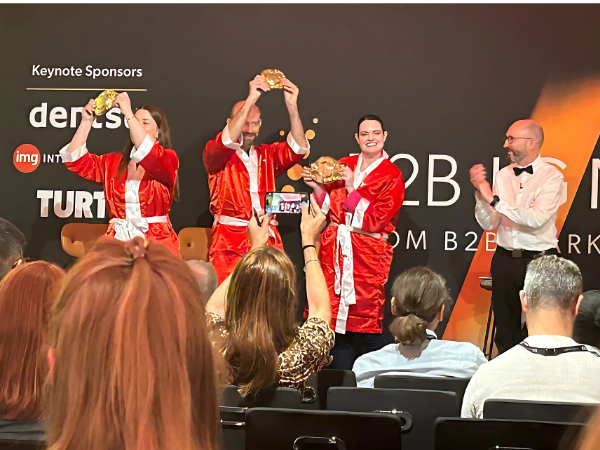Your privacy is important to us and we are committed to protecting your personal data. This privacy notice sets out how Inflexion Group Ltd uses and protects any personal data you give to us when you use this website.
Inflexion Group is committed to protecting your privacy and complying with the UK General Data Protection Regulation (“UK GDPR”) and the Data Protection Act 2018 (“DPA 2018”). This privacy notice sets out your rights, and the basis by which we collect, use and disclose the personal data on you. Inflexion Group will always aim to be transparent about how we process personal data.
Who we are
INFLEXION GROUP LTD is incorporated and registered in England and Wales with company number 13253251 and whose registered office is at Pantiles Chambers, 85 High Street, Tunbridge Wells, Kent, TN1 1XP, United Kingdom.
How do we collect personal data from you?
We collect personal data on this website in the following circumstances:
- data which is collected and stored during normal use of the site, such as your IP address and the pages you visited when you opt to submit personal information, in order for us to send you further information or email alerts;
- when you request to view certain content, such as white papers, or research; or when you register for an event, conference or webinar.
Any information you provide, or which we request in order to fulfill legal requirements, will only be used in accordance with this privacy notice.
What data about you is collected and stored?
The personal data we might collect and store includes;
- your basic information and contact details. This may include your name, the organisation to which you belong or represent (if applicable), your contact phone number and email address. Information about your computer, such as your IP address, operating system and browser type.
- details of your visits to our website, the pages you view and resources you access or download.
- if you contact us with an enquiry, or for information, we may keep a record of that correspondence.
- we may ask you to complete surveys that we use for research purposes, although you do not have to respond to them.
- if you are a delegate or attendee, we may also hold any special requirements you may have regarding the event(s) you are attending.
How is your data used?
We may use your personal data in the following ways:
- we analyse browsing activity data to understand how people use the features and functions of our website to identify improvement so that we can provide you with a better website experience
- we analyse how you interact with website and email content to enable us to provide you with better and more relevant content
- to fulfil your requests for more information, e.g. white papers, articles, or other content. Pages that collect this type of information may provide further information as to why your data is needed and how it will be used.
- for surveys or research questionnaires to help improve our content or our services to you.
- to contact you for marketing purposes where you have agreed to this.
How we protect your data
We are committed to ensuring that your personal data is secure. To prevent unauthorised access or disclosure your data is held securely on credible, established Cloud Services in accordance with our IT Security Policy. Access to Inflexion Group’s Cloud storage areas is restricted and controlled.
All our employees, Associates, partners and suppliers have signed non-disclosure and confidentiality agreements with Inflection Group, which in particular cover your personal data.
How long will we keep your personal data?
Whenever we collect or process your personal data, we will only keep it for as long as is necessary for the purpose for which it was collected unless we need to keep it longer to comply with our legal obligations.
At the end of that period your data will either be deleted completely or anonymised (e.g. by aggregation with other data so that it can be used in a non-identifiable way for analysis and business planning).
What legal basis do we have for processing your personal data?
When we collect your personal data we will make it clear to you which data is necessary in connection with a particular service.
The law on data protection sets out a number of different reasons for which a company may collect and process your personal data, including:
Consent
In specific situations, we may collect and process your data with your consent (e.g., when you consent to receive marketing materials or make an enquiry).
Legal Compliance
If the law requires us to, we may need to collect and process your data. For example, we can pass on details of people involved in fraud or other criminal activity to law enforcement.
Legitimate Interests
In specific situations, we require your data to pursue our legitimate interests in a way which might reasonably be expected as part of running our business and which does not materially impact your rights, freedom or interests. For example, where you have provided us with your business card, we may use your address details to send you information on our products, services or research.
With whom do we share your personal data
We may share your data to support your attendance at one of our events, but only where necessary (e.g. with representatives of a venue where our event is being held).
We will ensure that appropriate arrangements are in place to protect your privacy before sharing your data.
We may share your data with government authorities and/or law enforcement officials if required to do so by law or to meet regulatory requirements.
We will not otherwise share your data with any third party unless we have your consent. We will not sell your data to any third parties.
Your rights
You have the right to ask us for a copy of the data we hold about you, you may request that it be corrected if it is inaccurate or to ask us to delete any or all of your Data or to stop processing it. However, your rights may be limited if we have a compelling legitimate interest in keeping your Data.
Please contact us at tim@inflexiongroup.com to do so. We will provide you with an electronic copy of your Data or carry out your deletion instructions, in the absence of a legitimate reason for not doing so, within a month of receiving you request.
How to contact us
If you have any questions or concerns about how Inflexion Group handle your personal data then in the first instance you can contact tim@inflexiongroup.com. We are registered as a tier 1 organisation with the Information Commissioner’s Office, registration number ZB222816. If we are unable to satisfy your concerns, then under the General Data Protection Regulation you have a right to complain to the Information Commissioner’s Office at:
Information Governance Department
Information Commissioner’s Office
Wycliffe House
Water Lane
Wilmslow
Cheshire
SK9 5AF
URL: https://ico.org.uk/
Changes to our Privacy Notice
Inflexion Group may change this notice by updating this page. You should check this page from time to time to ensure that you are happy with any changes. This privacy notice is effective from November 2021.




